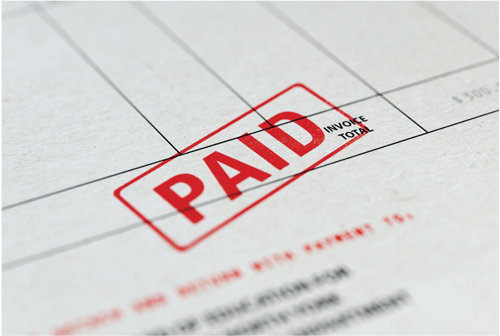Strategies and Negotiation Tips for Early Payment Discounts

One strategy to entice clients to pay sooner is to offer an early payment discount—usually a 2 percent discount if they pay within 10 days. A previous article in the October 2015 issue, “When to Offer Early Payment Discounts,” addressed considerations for suppliers. This article presents the opposite side of the equation—when a company should take advantage of these incentives if suppliers offer them, and how to negotiate the best terms.
The only reason a company should consider paying early is if it has excess cash flow that can’t be better deployed elsewhere. It’s that simple.
A company should never pay early if it has cash flow problems, if cash is tight, or if owners are not sure the company will be able to pay foreseeable obligations. In this case, paying early, even with the discount, can get the company into financial trouble.
Before a company should start paying a lot of invoices early, owners should consider meeting with their finance staff or CPA, and request a cash flow forecast for the next three to six months. This forecast allows owners to make an educated decision.
Strategy for early payment
Most companies handle early payments somewhat haphazardly. When they have extra funds, they pay their suppliers early just to book the discount. However, the 2 percent discount is only one of the benefits that you can get from paying early. You can get the following other benefits if you negotiate correctly.
1. Improved profit
The obvious benefit of taking an early payment option is that the company gets a 2 percent discount and it improves profit margins. The discount drops straight to the bottom line. This benefit is an important one, though not necessarily the most important one.
2. Improved commercial credit
A more important benefit is that a company can use early payments to improve its commercial credit. In turn, better credit allows the company to negotiate better future terms from suppliers, which further improves cash flow. In this context, better terms can mean a longer time to pay invoices, a higher supplier credit line, or both.
The trick is simple—make early payments only to suppliers that report data to credit bureaus and get both the discount and an early payment mark in the report. On-time and early payments strengthen a company’s payment profile and its credit report. Because this strategy is a long-term play, the credit report may take months to improve. But it’s worth it.
To get this benefit, owners have to do a little detective work. They need to find out which suppliers report their trade experience to the credit bureaus (usually Dunn & Bradstreet, Cortera, Experian and Ansonia).
As a general rule, larger companies tend to report more credit information than smaller companies. So, one simple way to get this benefit is to pay invoices from larger suppliers promptly. Another way is to call their accounts receivable department and ask if they report data to credit bureaus. If they do report, ask them to which bureaus and how often.
3. Get better payment terms
Additionally, a company can use early payment to get better payment terms from the supplier that is actually getting the payment. For example, assume the supplier gives a 2 percent/10 net 30, which gives an early payment discount if the customer pays within 10 days. Otherwise, the customer has 30 days to pay. Ask the supplier if they are willing to give 2 percent/10 net 40 terms (or, even better, 2 percent/10 net 50) for future invoices if the company pays a few invoices within ten days.
From the supplier’s perspective, this concession does not cost them much. However, these terms will be very useful to a customer if and when cash flow is tight.
4. Get a larger discount
Finally, a company can try to negotiate a better discount than the 2 percent. Perhaps a supplier is willing to offer a 2.5 percent discount or a 3 percent discount if a customer pays the invoice immediately. As always, any negotiated discounts boost profits and drop right to the bottom line.
Negotiating these improved terms is not done as often as it should be. Using a professional, even-keeled negotiation approach is key. A customer should let their supplier know that it has excess cash and is looking to deploy it in a way to help both the supplier’s business and the customer’s business. Then the customer should ask if the supplier is open to providing a longer payment term for future invoices, or if they are willing to increase the discount. Company owners might be surprised by their suppliers’ flexibility, especially if the owner promises to pay a few invoices early.



